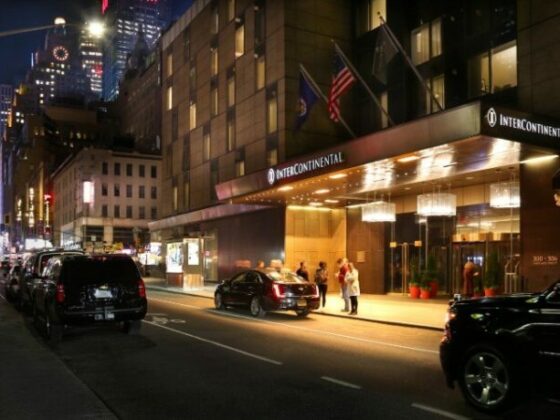
As we close out the first quarter of 2025, the U.S. hotel industry is demonstrating remarkable resilience and adaptability in a rapidly changing landscape. The sector has built on the momentum of 2024, with strong performance indicators across key metrics. However, the industry continues to navigate challenges such as shifting consumer preferences, technological advancements, and economic uncertainties. Here’s a comprehensive look at how Q1 2025 has shaped up for the U.S. hotel industry.
1. RevPAR Growth: A Robust Recovery
Revenue per available room (RevPAR) has seen significant growth in Q1 2025, with year-over-year increases of 6-8%, according to STR. This growth is driven by a combination of higher average daily rates (ADR) and improved occupancy levels. The industry has successfully capitalized on the return of international travelers, particularly from Asia and Europe, as global travel restrictions have eased further. Luxury and upper-upscale segments have led the charge, benefiting from strong demand for premium experiences.
2. Occupancy Rates: Nearing Pre-Pandemic Levels
Occupancy rates have continued their upward trajectory, reaching an average of 65-67% nationwide in Q1 2025. This marks a significant improvement compared to the same period in 2024 and brings the industry closer to pre-pandemic levels. Leisure destinations, such as coastal and mountain resorts, have maintained their popularity, while urban markets have seen a notable rebound thanks to the resurgence of business and group travel.
3. ADR Growth: Sustained but Slowing
Average daily rates (ADR) have remained strong, though the pace of growth has moderated compared to the double-digit increases seen in 2022 and 2023. In Q1 2025, ADR growth hovered around 4-5%, reflecting a more balanced approach to pricing as hotels aim to maintain demand without alienating price-sensitive travelers. The focus has shifted toward value-added offerings, such as bundled packages and personalized experiences, to justify higher rates.
4. Labor Market: Stabilizing but Still Challenging
The labor market has shown signs of stabilization, with many hotels reporting improved staffing levels compared to previous years. However, challenges persist, particularly in high-cost markets where competition for skilled workers remains intense. To address this, the industry has embraced innovative solutions, including automation, upskilling programs, and enhanced employee benefits. These efforts are helping to reduce turnover and improve service quality, which is critical for maintaining guest satisfaction.
5. Group and Business Travel: A Full Recovery
One of the most encouraging trends in Q1 2025 has been the full recovery of group and corporate travel. Conventions, conferences, and corporate meetings have returned to pre-pandemic levels, driven by pent-up demand and the need for in-person collaboration. Major cities like New York, Chicago, and Las Vegas have benefited significantly from this rebound, with hotels reporting strong bookings for large-scale events. Additionally, the return of international business travelers has provided a much-needed boost to urban markets.
Recommended by LinkedIn
6. Economic Factors: A Mixed Impact
The U.S. economy has remained relatively stable in Q1 2025, with moderate inflation and steady interest rates. While this has supported consumer spending on travel, concerns about a potential economic slowdown linger. Hotels are closely monitoring macroeconomic indicators, as any downturn could impact discretionary travel spending. However, the industry’s diversified revenue streams—spanning leisure, business, and group travel—provide a buffer against economic volatility.
7. Sustainability and Technology: Driving Innovation
Sustainability and technology have emerged as key differentiators in Q1 2025. Hotels are increasingly adopting eco-friendly practices, such as renewable energy systems, water conservation measures, and waste reduction initiatives, to meet the growing demand for sustainable travel. At the same time, advancements in technology—such as AI-powered guest personalization, contactless check-in, and predictive analytics—are enhancing operational efficiency and creating more seamless guest experiences. These investments are not only improving profitability but also positioning hotels as leaders in innovation.
8. Emerging Trends: Wellness and Experiential Travel
Wellness tourism and experiential travel have gained significant traction in Q1 2025. Travelers are prioritizing health and well-being, leading to increased demand for properties with spa facilities, fitness programs, and wellness-focused amenities. Additionally, experiential travel—such as cultural immersions, adventure activities, and local culinary experiences—has become a major draw, particularly among younger demographics. Hotels that cater to these preferences are seeing higher occupancy and guest satisfaction scores.
Looking Ahead: A Promising Year
As we move into Q2 2025, the U.S. hotel industry is well-positioned for continued growth. The full recovery of group and business travel, coupled with sustained demand for leisure travel, provides a solid foundation for success. However, hotels must remain vigilant in addressing labor challenges, economic uncertainties, and evolving consumer expectations. By embracing innovation, sustainability, and personalized experiences, the industry can capitalize on emerging opportunities and deliver exceptional value to guests.
Conclusion
Q1 2025 has been a strong start for the U.S. hotel industry, marked by robust RevPAR growth, improving occupancy rates, and the full return of group and corporate travel. While challenges remain, the industry’s ability to adapt and innovate ensures a bright future. As we look ahead, the focus will be on maintaining momentum, enhancing guest experiences, and navigating the dynamic landscape of travel and hospitality.
What are your thoughts on the Q1 2025 performance of the U.S. hotel industry? Share your insights in the comments below! Let’s continue the conversation.





